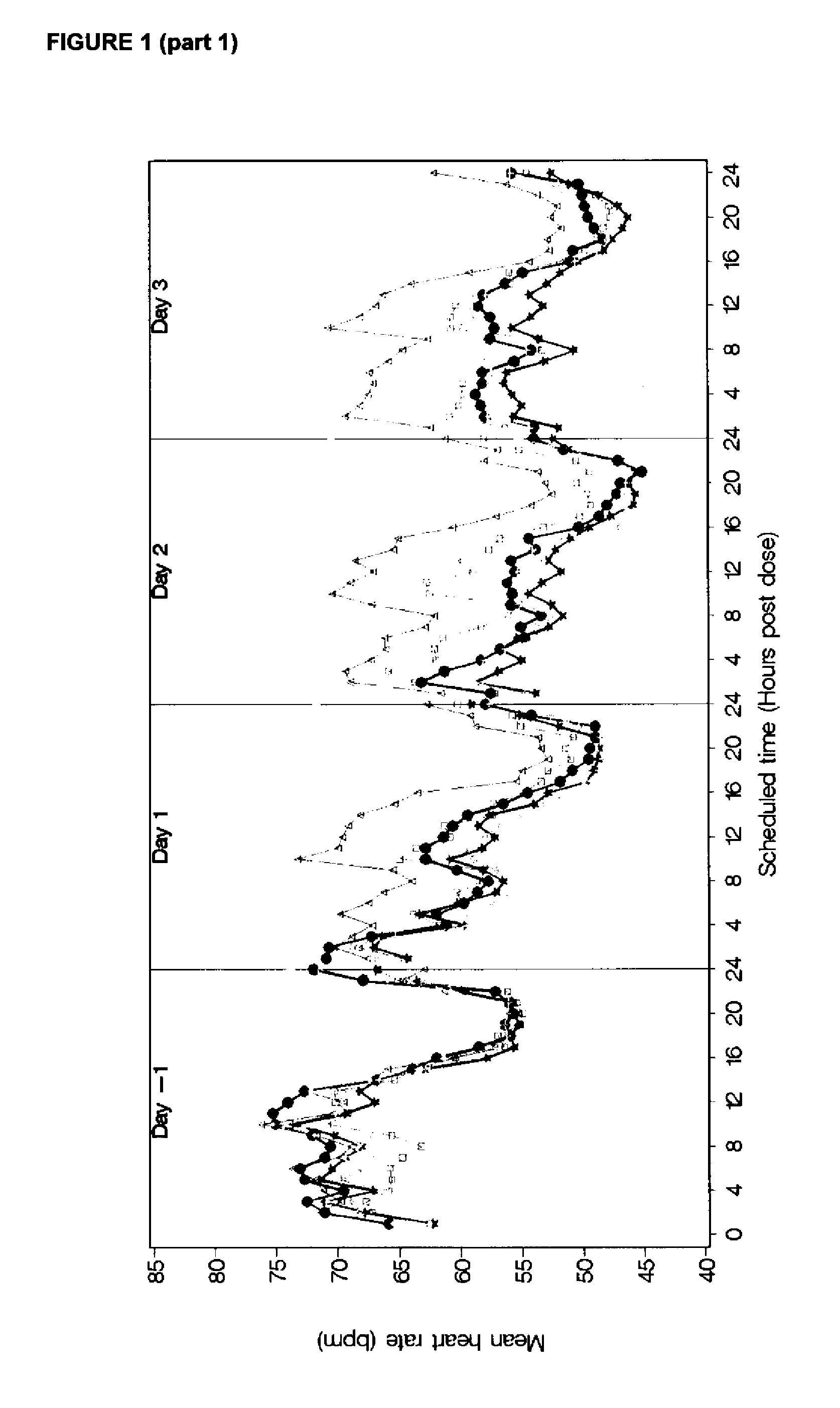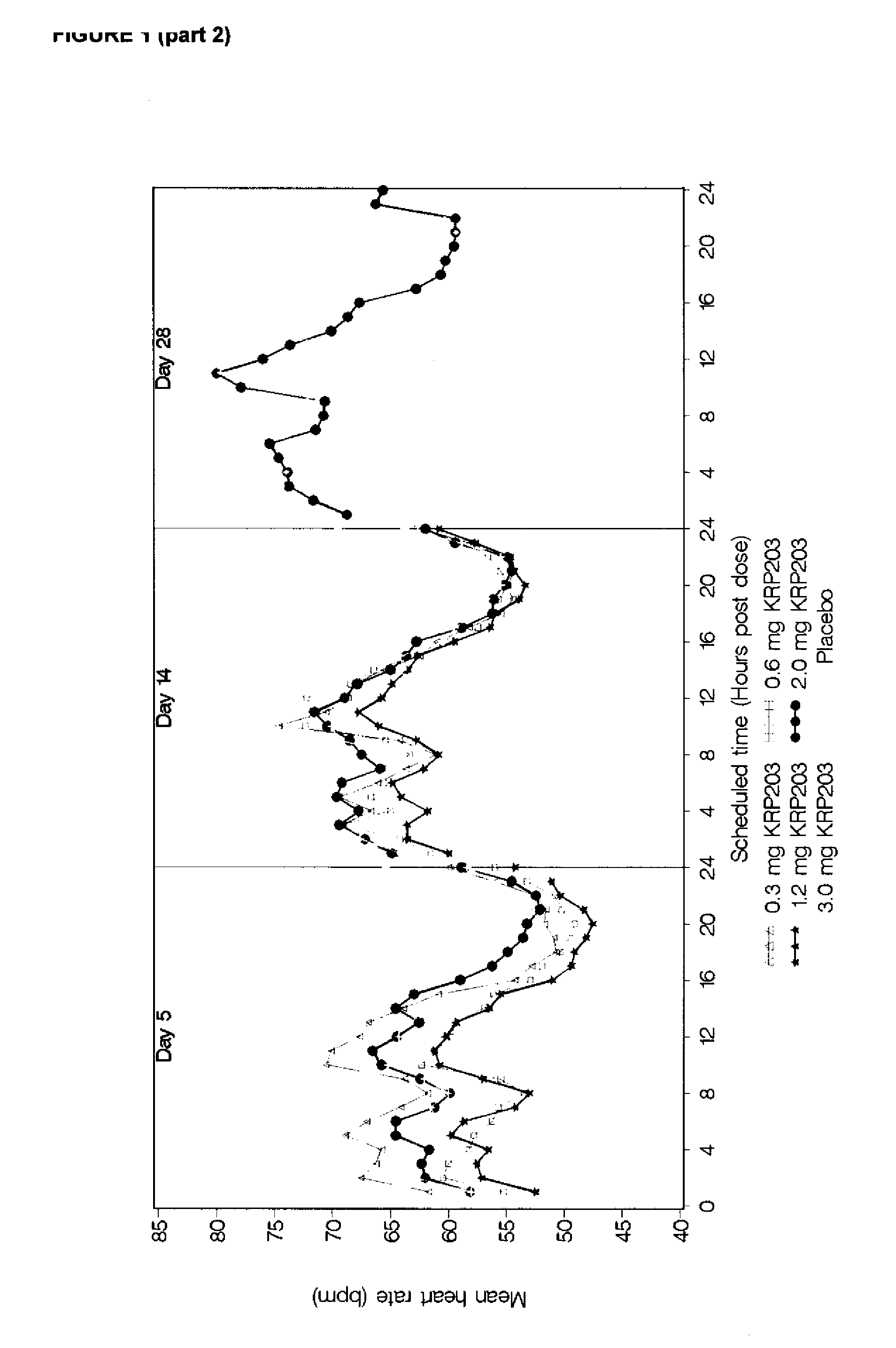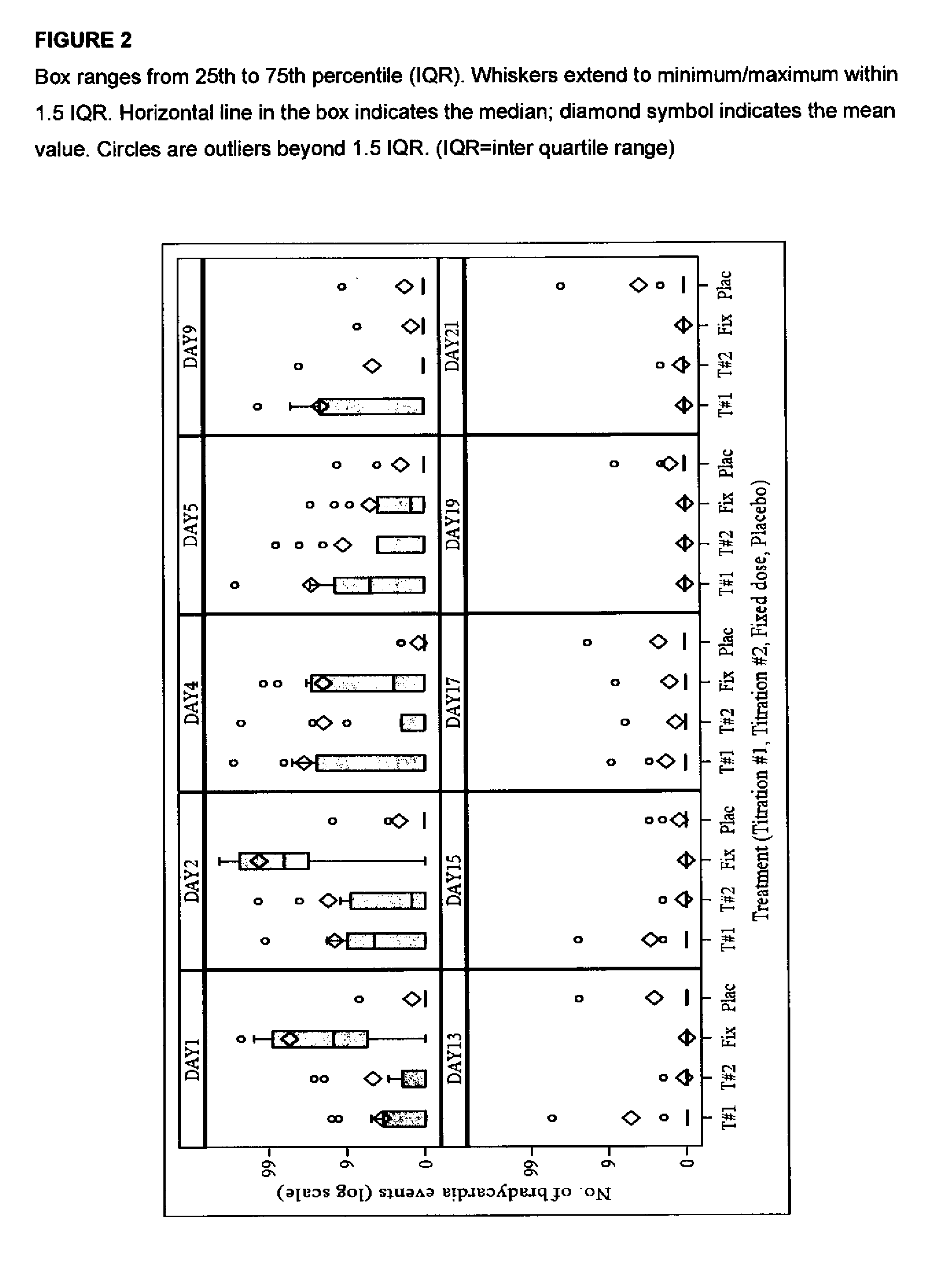Dosage Regimen of Diaryl Sulfide Derivatives
a diaryl sulfide and derivative technology, applied in the direction of biocide, drug composition, immunological disorders, etc., can solve the problems of affecting patient compliance, causing some patient inconvenience, and increasing treatment costs and complicated,
- Summary
- Abstract
- Description
- Claims
- Application Information
AI Technical Summary
Benefits of technology
Problems solved by technology
Method used
Image
Examples
example 1
[0106]The effect on heart rate of 2-amino-2-[4-(3-benzyloxyphenylthio)-2-chlorophenyl]ethyl propane-1,3-diol (Compound A, or KRP203) was measured in healthy subjects over a period of 28 days and compared to placebo.
[0107]Multiple ascending doses of compound A were investigated in healthy subjects. 60 subjects in 5 cohorts (12 subjects per cohort) were dosed at 0.3 mg, 0.6 mg, 1.2 mg and 3 mg once daily for 14 days and at 2 mg for 28 days. In each cohort, subjects were randomised between compound A (9 subjects) and placebo (3 subjects).
[0108]As seen in FIG. 1 (part1 and part2), the decrease in heart rate following dosing was observed to increase with increasing dosage of compound A. This difference decreased as the trial progressed. Heart rates on Day 28 were similar for the 2 mg dose level and the placebo treated subjects.
[0109]FIG. 1 (part 1 and part 2) shows the mean profile in hourly average heart rate by the indicated study day, starting by day (−1) where all received placebo, a...
example 2
[0110]Utility of the dosage regimen in attenuating the negative chronotropic effect and / or providing other safety benefits e.g. reduction in number of heart pauses greater than 3 seconds may be demonstrated in standard animal or clinical tests, e.g. in accordance with the method described hereinafter.
[0111]A total of 56 healthy male volunteers were enrolled in a double blind, parallel, placebo controlled, dose titration, once daily, multiple oral dose study. 53 (95%) subjects completed the study.
[0112]Increasing doses of 2-amino-2-[4-(3-benzyloxyphenylthio)-2-chlorophenyl]ethyl-propane-1,3-diol (Compound A) starting at 0.3 mg o.d. or 0.5 mg o.d. and ending at the maximal therapeutic dose of 2 mg o.d. were administered to the subjects as specified in Table 1 below.
TABLE 1Study PeriodRun-inTreatment PeriodDay−1123456789101112131415161718192021Titration placebo0.30.30.30.30.60.60.60.60.90.90.90.91.21.21.21.222222group #1 (mg)Titration placebo0.50.50.50.50.50.50.5 0.50.50.50.50.50.50.51...
PUM
 Login to View More
Login to View More Abstract
Description
Claims
Application Information
 Login to View More
Login to View More - Generate Ideas
- Intellectual Property
- Life Sciences
- Materials
- Tech Scout
- Unparalleled Data Quality
- Higher Quality Content
- 60% Fewer Hallucinations
Browse by: Latest US Patents, China's latest patents, Technical Efficacy Thesaurus, Application Domain, Technology Topic, Popular Technical Reports.
© 2025 PatSnap. All rights reserved.Legal|Privacy policy|Modern Slavery Act Transparency Statement|Sitemap|About US| Contact US: help@patsnap.com



